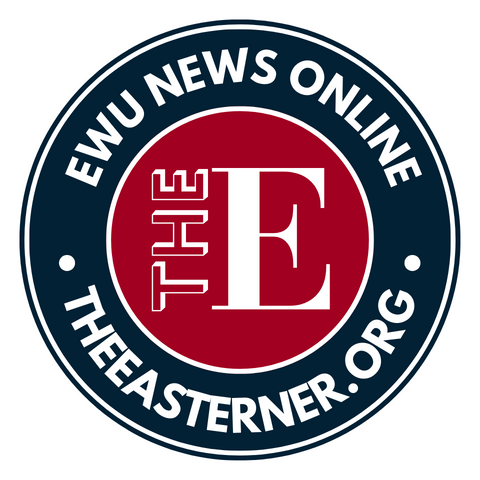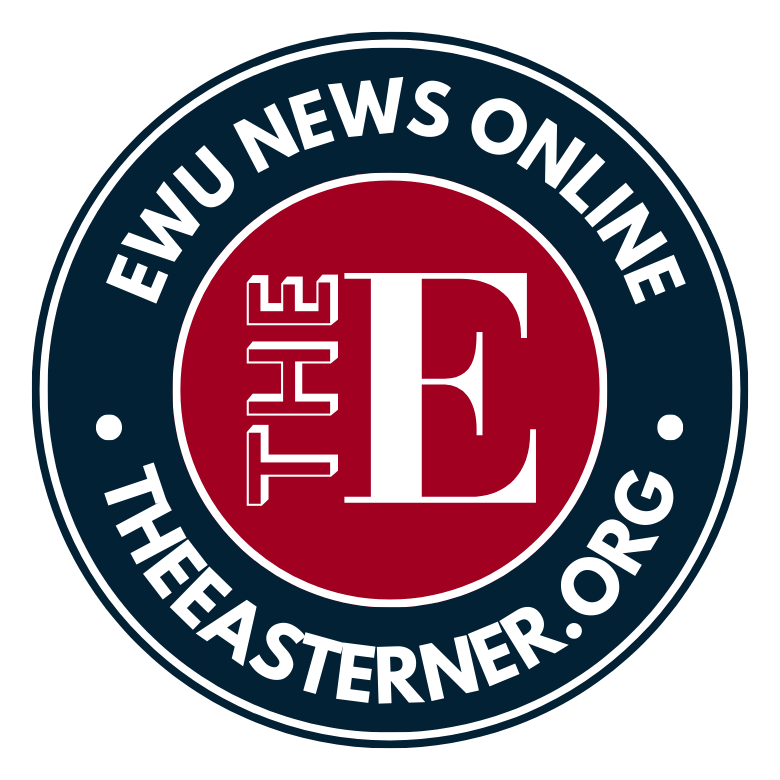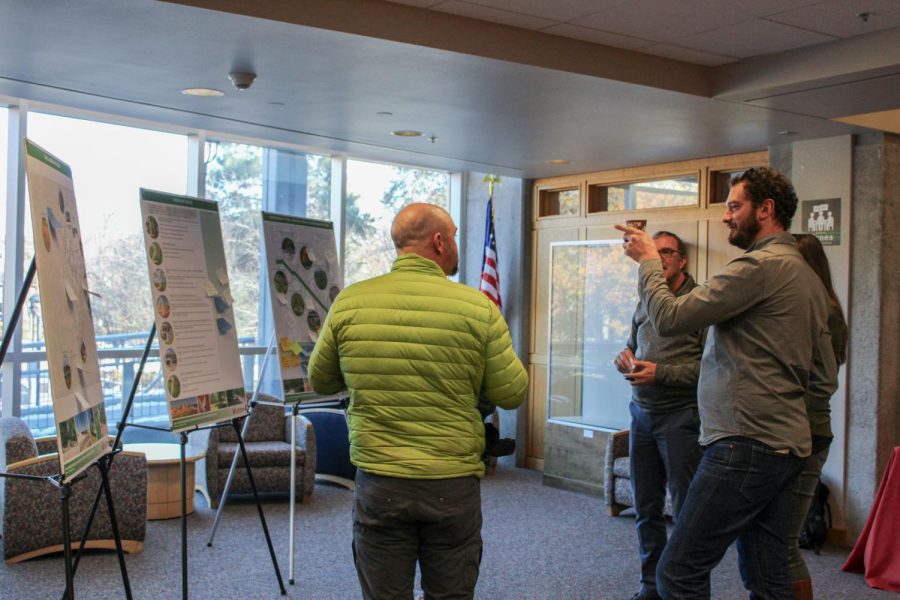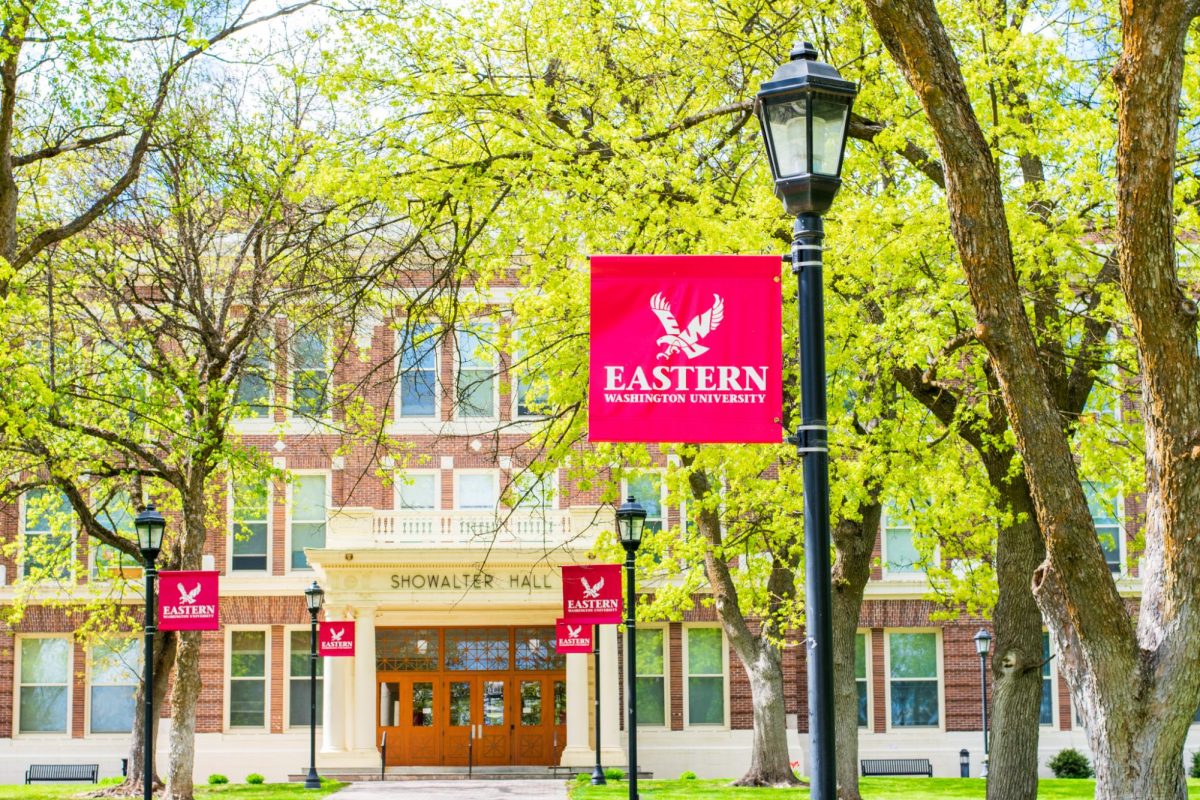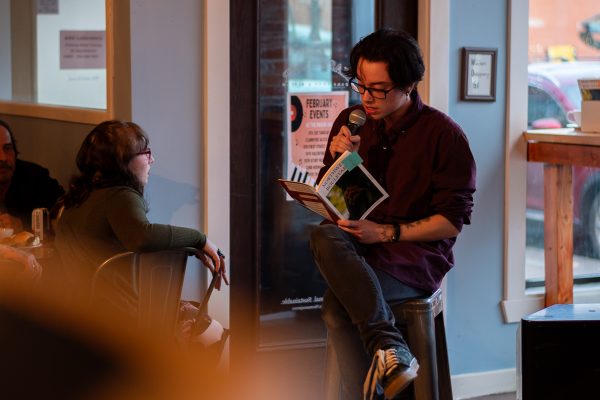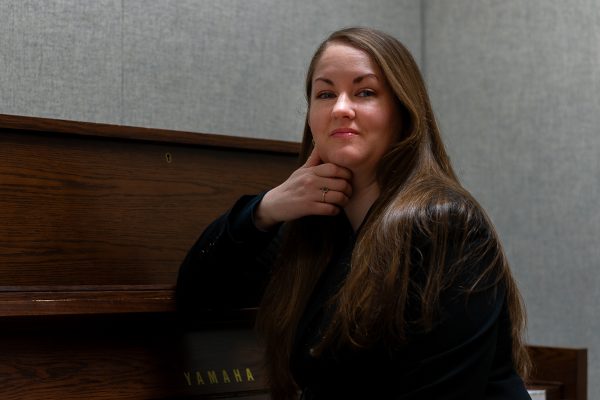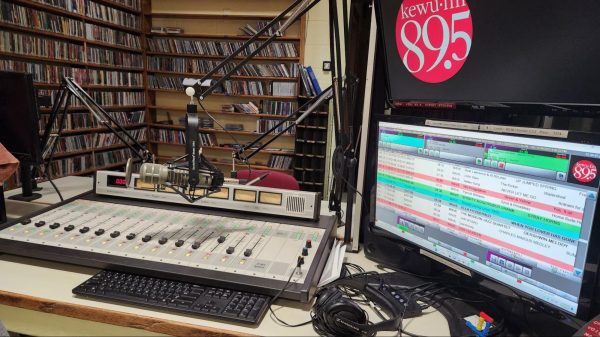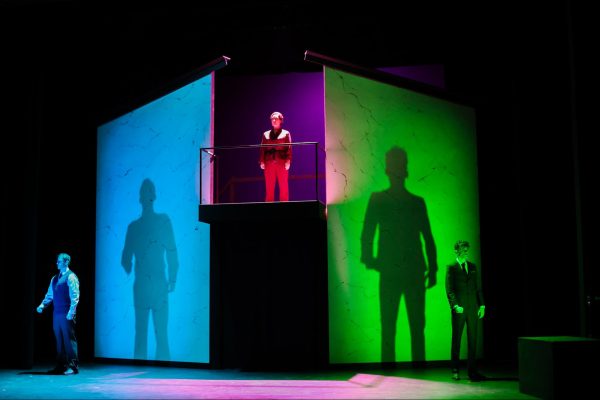EWU Creates new Climate Resiliency Landscape Masterplan
The presenters share the University’s sustainability plan with members of the Eastern community.
December 1, 2022
he future landscape and design of the lawns on Eastern Washington University will be completely renovated with the new Climate Resiliency Landscape Masterplan.
Eastern Washington University has strived toward becoming a carbon neutral institution. According to the current Climate Action Plan (CAP), EWU is trying to reduce greenhouse gasses used in the university. By 2050, the goal is to reduce greenhouse gas emissions by 95% and create net zero emissions across all state agencies.
This new masterplan expands on those goals.
Erik Budsberg, director for the Office of Sustainability, says that this plan “is about water conservation, recognizing that we’re in a warming climate and that we need to protect the precious resource that is fresh water.”
Irrigation of grass, Budsberg says, is one of the largest uses of EWU’s water. A solution presented to combat this issue while also maintaining the aesthetics of the green lawns around campus is to replace it. Replacing grass with tolerant, native shrubs and other, lower water-usage plants is one solution to the issue. Another solution is mixing various adaptable plant species into the grass such as clover or creeping thyme to keep the aesthetics of the grasses while remaining environmentally friendly.
“It would take some initial maintenance to get them established, but ideally once they establish they could help maintain their own little system,” Budsberg said.
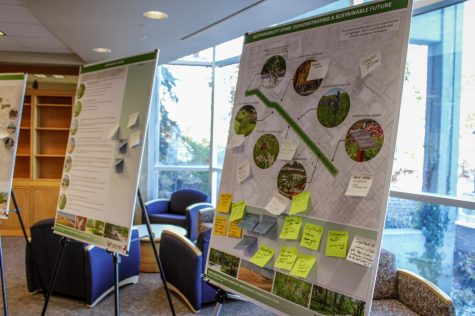
(Emily Powers)
Another issue with EWU’s lawns Budsberg presented is gasoline usage. Vehicles are used all around campus which have carbon emissions associated with them. The equipment used to maintain the grass require gasoline or diesel.
Budsberg states that the electrification of the machines around campus such as lawn mowers, weed whackers, chainsaws, and leaf blowers is the future. “That technology is readily available, that equipment really isn’t any more expensive than the gasoline counterparts.” Budsberg said the university is currently figuring out which equipment works best and testing them to see if they will be overall more efficient while producing less of a carbon footprint.
One of the big changes the Office of Sustainability is trying to implement is what they call the “Sustainability Spine.” The Sustainability Spine is a stretch of road on Eastern’s campus that will create opportunities to lower the university’s greenhouse gas emissions by reducing non-essential lawns, creating pollinator-supporting plants, improving pedestrian and bicycle crossings to encourage alternative transportation, managing stormwaters, and introducing native plants into grass areas.
Michael Terrell, EWU’s landscape architect, claims that there can be a ripple effect with Eastern’s change to a more environmentally sustainable design. As the university is large within the city of Cheney, the carbon footprint emitted can have a large impact on the city as a whole.
“If we get students exposed to simple things such as reducing water use for irrigation or introducing native plants, there’s a multiplier effect they can take out into their other communities,” Terrell said.
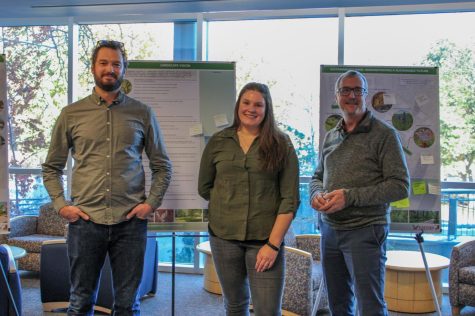
The landscape’s vision with this new masterplan is separated into seven different goals:
- Demonstrate sustainability and environmental responsibility within the campus ecology and environments
- Enhance climate resiliency
- Provide an accessible, safe, and welcoming campus
- Strengthen cultural heritage and natural resources
- Enhance sustainable green infrastructure/ stormwater management facilities
- Support education, student academics, and involvement
- Promote sustainable maintenance practices
According to the Office of Sustainability, each of these goals combined with the Sustainability Spine, can create an atmosphere around campus of environmentally friendly grasses and as little greenhouse gas emissions as possible.
Climate change has been a large topic for several years and with this new Climate Resiliency Masterplan, EWU hopes to prepare for the impacts of climate change. With reducing greenhouse gas emissions and lower water usage, the EWU landscape is going to shift gradually in the upcoming months.
“There’s pretty overwhelming support that we should really look at where we have lawn and how we use it and then even the places that we do have lawn, there are options to design the systems to be a little bit more sustainable,” Budsberg said.
